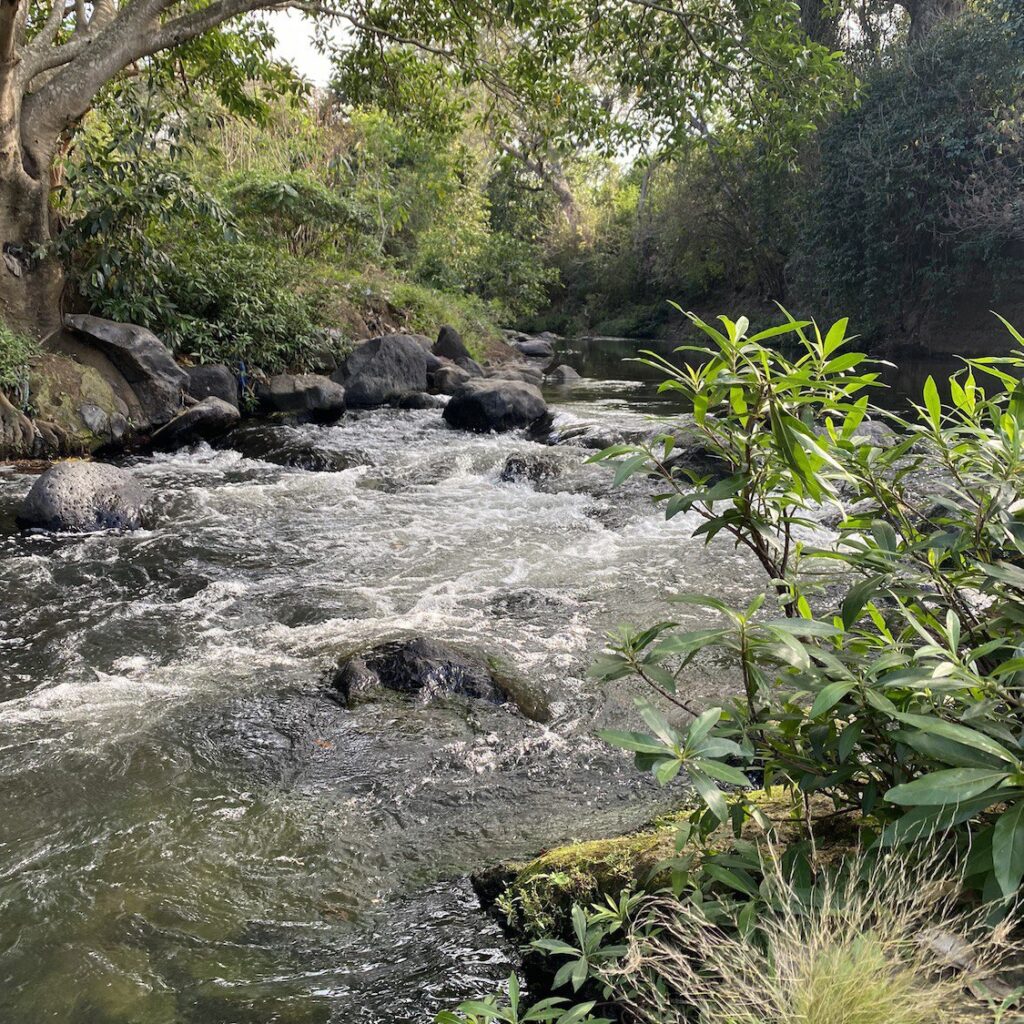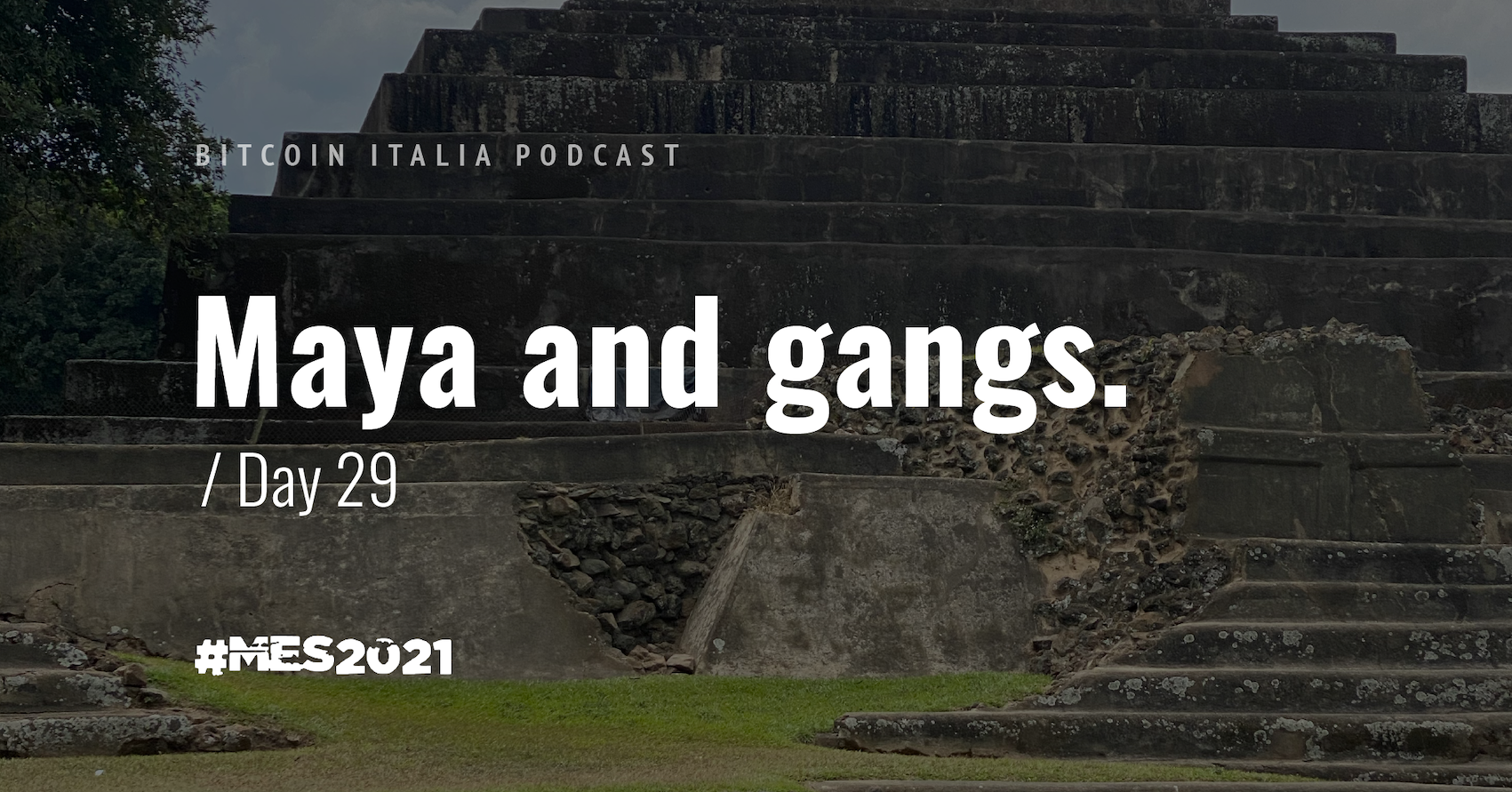
The sky over western El Salvador is cloudy when we wake up. This doesn’t distress us too much. A break from the scorching sun of the tropics can also be appreciated. But as we step outside to begin our explorations, we quickly realize that despite this, it is very hot and the cloud layer is creating a certain mugginess.
We head to the nearby town of Chalchuapa, nestled in the middle of a large plain. It’s everything you might expect from this part of the country. Chaotic, full of life, markets, with typical colonial architecture now in decay. We wander through the streets of the center, looking for something to eat, before continuing on. Our destination is in fact another.
The city is famous for the archaeological complex of Tatsumal, the most important Mayan ruins in all of El Salvador. They are not far from the center, in total continuity with the modern urban fabric. The town literally rises above the ancient settlement, which scholars date as far back as 5000 BC. It makes quite an impression as you approach. The great stepped pyramid of the main complex still towers imperiously over the town, which consists mainly of low houses. It is imposing and dominates the whole scene. A very interesting contrast.
Tatsumal means “pyramid where the victims were burned”. Here the ancient Mayans worshipped a deity associated with light and energy. We like to think that his name was Satoshi and that shitcoiners were sacrificed on top of the monument. We do not shed a tear at the thought of all the Cardanos burned on the altar of futility.

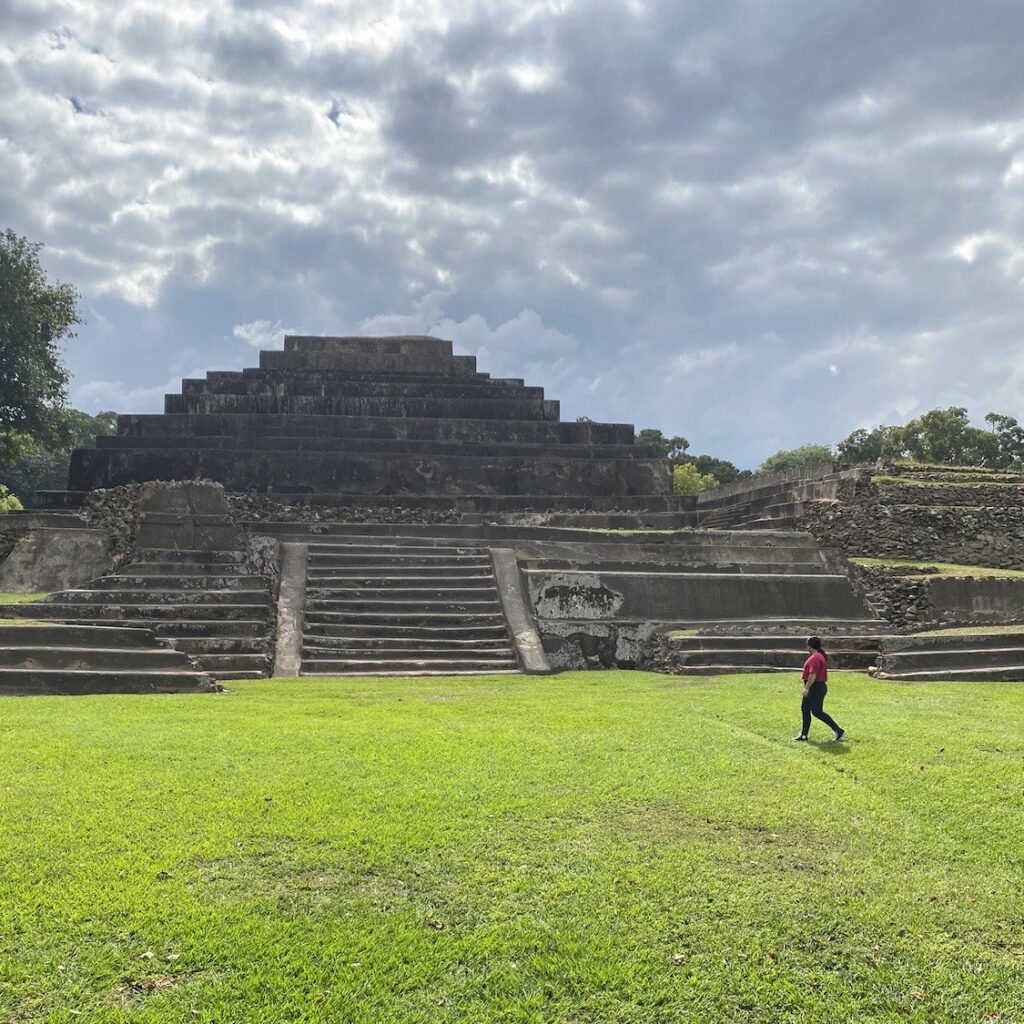
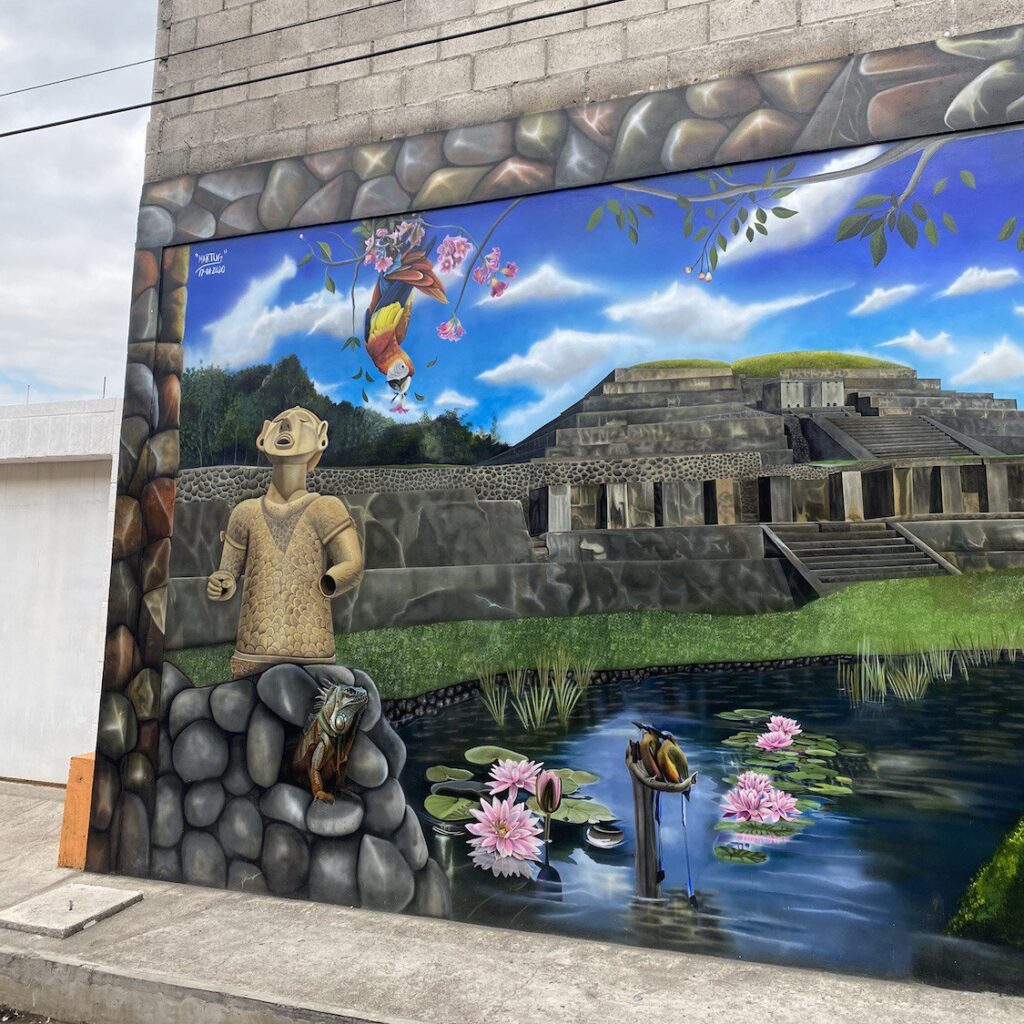
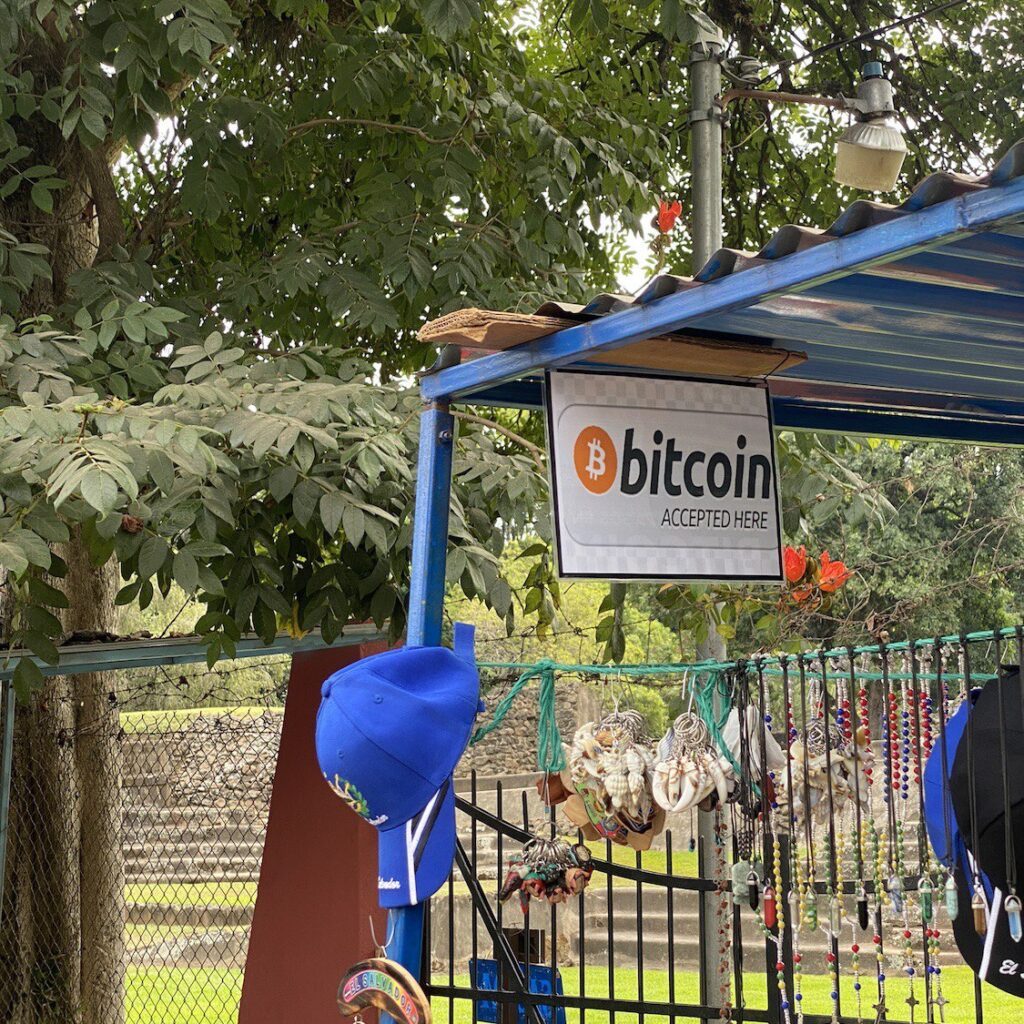
Around the monuments dozens of stalls sell the inevitable tourist goodies. Original Mayan calendars made in China, masks, skulls, traditional clothes. We get closer. Actually there would be nice things too, but what we want to find out is if they accept Bitcoin. This is obviously a very touristy area and we are pleased to see that, once again, the vendors have evolved. There are many accepting them. The trend that we have long described in this diary of ours is confirmed. Opportunity drives adoption. Incentive. Just as the White Paper commands.
We approach the entrance to the archaeological site without having bought anything, it is not yet time to weigh down our backpacks with useless souvenirs. When we get to the ticket office, however, we are blocked: only cash. This is a custom that we noticed a bit ‘everywhere in the country. Exhibitions, museums and places administered by the Ministry of Culture do not accept Bitcoin. This time we ask for an explanation and a person in charge tells us, very kindly, that unfortunately they have not received any instructions yet. That they have not been equipped with tablets or devices that allow museum ticket offices to install Chivo. He tells us that they are apparently scheduled for 2022 but he really can’t tell us when exactly. He is genuinely sorry and realizes himself how absurd this is. He invites us to be understanding, it’s only a few months after all and things, in El Salvador, move in small steps.
We have no intention of going against the rules of our mission, and so we are leaving without being able to enter, even if we are a little sorry. Of course the contrast between private enterprise, in the person of the stalls adjacent to the entrance, and the State, in the person of its Ministry, is jarring. In cases like these, one really has to wonder if centralized administration is the best possible form of organization and government. Despite how beautiful we are not in a nation of boundless cultural heritage, there will be no less than 50 museums with entrance fees. It doesn’t seem to us such a difficult thing to implement. Maybe with a dozen less fireworks before the President’s speech at the closing of the Adopting Bitcoin conference in October, the fifty devices needed could have been purchased. It probably wasn’t deemed a priority, but if part of the point of the Bitcoin law is to attract investment and tourism, we really can’t understand, once again, Bukele’s agenda. If only we could ask him….
In the area there is a nice river with some pretty well known waterfalls called Salto El Espino. Apparently they are worth seeing and we try to reach them. The road is unpaved and for several kilometers it puts a strain on the integrity of our Bitcoin Car. We arrive in the proximity of the river. We distinctly hear the sound of the water rippled by the rapids. We park and continue on foot into the countryside. We find the waterfalls. They are beautiful even if the area is a bit dirty. Nothing new. Every third world country is suffocated by garbage. It’s unfortunately part of the game. We sit on the banks of the river to chill out.
After half an hour we are approached by a man with his wife and daughter in tow. He tells us he is an evangelical pastor who lives not far away. He advises us not to stay in the area too long because it is dangerous. There are gangs of kids armed to the teeth that have often caused problems, although lately they seem to have calmed down. We have no reason not to believe him and it seems wise to take his advice. We thanked him, returned to the car at dusk and headed for the base camp of Santa Ana.
Never a dull moment in El Salvador.

